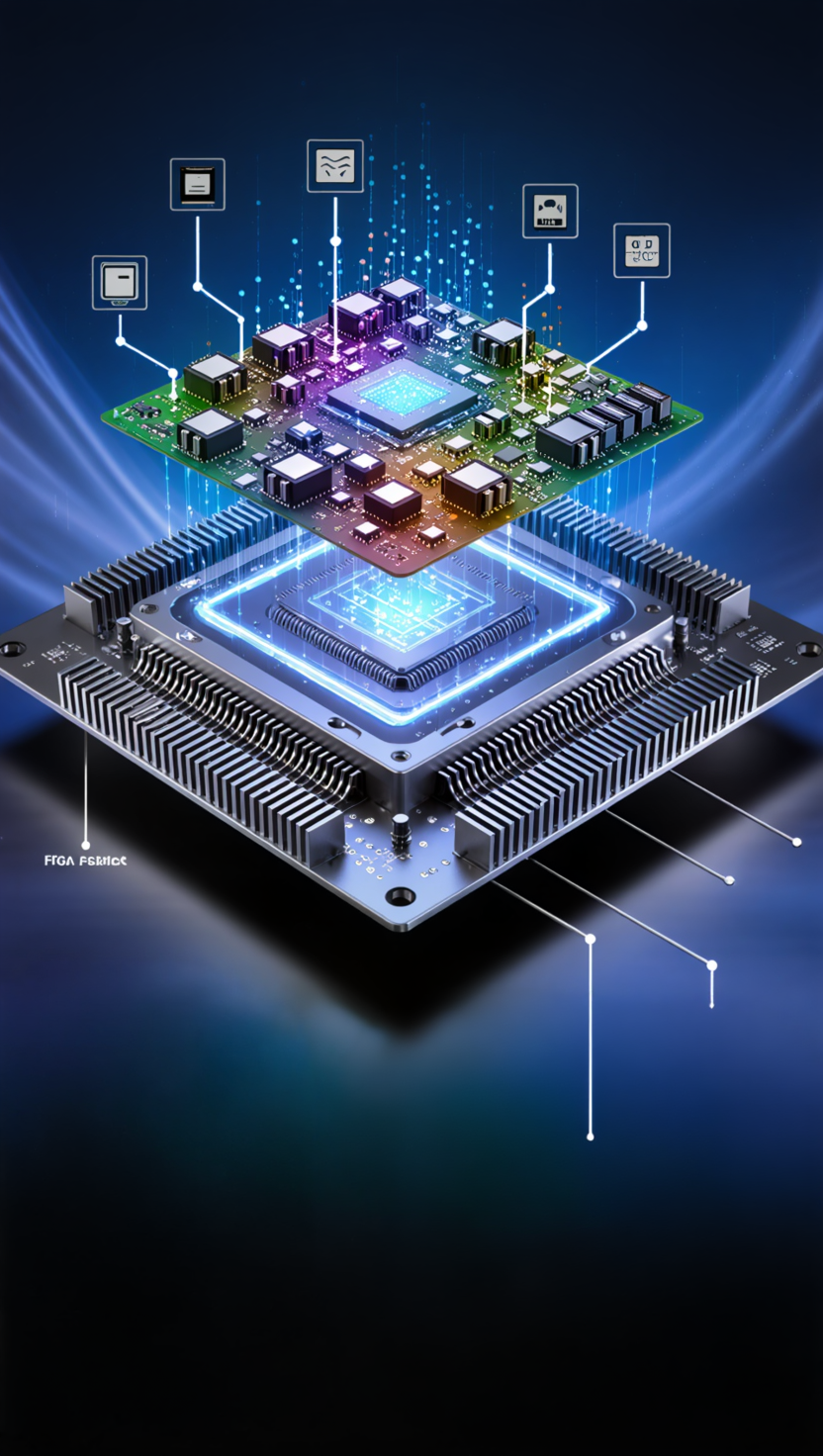Series: How to Choose an FPGA Chip - Part 2.3: Data Centers and AI Acceleration — Reconfigurable Compute at Scale
2025-09-28 11:07:46 1183
Part 2.3: Data Centers and AI Acceleration — Reconfigurable Compute at Scale
Data centers are rapidly evolving to support workloads such as artificial intelligence, machine learning, and high-performance networking. FPGAs play a unique role in this environment, offering reconfigurable compute that complements CPUs and GPUs. For engineers, the challenge is maximizing throughput and minimizing latency. For managers, the priority lies in balancing high ASP devices with total cost of ownership (TCO) and long-term supply security.
1. AI Inference and Training Acceleration
- Engineer’s View: FPGAs provide flexible acceleration for convolutional neural networks (CNNs), recurrent models, and transformer architectures. While GPUs dominate training, FPGAs excel in low-latency inference and custom pipelines.
• Manager’s View: Devices with AI acceleration are high ASP ($1000–$3000) and require vendor-specific tools (Vitis AI, OneAPI). Vendor lock-in and long lead times are significant risks.
2. SmartNIC and DPU Acceleration
- Engineer’s View: FPGAs enable programmable packet processing, encryption, and virtualization offload. They integrate PCIe Gen4/Gen5, Ethernet MACs, and DSPs for real-time networking acceleration.
• Manager’s View: ASPs are high ($1000+) and devices are often in short supply. However, they reduce OPEX by consolidating server workloads and improving energy efficiency.
3. Storage and Security Acceleration
- Engineer’s View: FPGAs accelerate compression, decompression, and encryption/decryption for cloud storage. They provide deterministic latency not possible with CPUs.
• Manager’s View: Moderate to high ASP ($500–$1500) but significant TCO benefits. Improved storage efficiency reduces infrastructure cost.
Comparative Table: FPGAs in Data Center and AI Applications
|
Application |
FPGA Requirements |
Example Families |
Engineer’s Priority |
Manager’s Concern |
|
AI Inference |
DSP/NPU blocks, DDR5/HBM, low latency |
Xilinx Versal AI Core, Intel Agilex |
Flexible CNN/Transformer acceleration |
High ASP, vendor lock-in |
|
SmartNIC/DPU |
PCIe Gen5, 400G Ethernet, DSP slices |
Xilinx Virtex UltraScale+, Intel Agilex |
Packet processing, encryption |
Premium pricing, supply assurance |
|
Storage/Security |
Compression, encryption IP, DDR interface |
Xilinx Alveo, Intel Stratix 10 |
Deterministic acceleration |
Moderate ASP, TCO benefits |
Case Studies
Case Study 1: AI Inference at Hyperscale
Challenge: A cloud provider needed low-latency inference for NLP models.
Solution: AMD/Xilinx Versal AI Core with hardened AI Engines.
Result: Reduced inference latency by 50% compared to GPU-only implementation.
Manager’s Perspective: ASP ~$2500, secured via long-term vendor contract.
Case Study 2: 400G SmartNIC Deployment
Challenge: A hyperscaler required programmable SmartNICs for 400G packet processing.
Solution: Xilinx Virtex UltraScale+ FPGA with PCIe Gen5 and 400G Ethernet support.
Result: Delivered 8× throughput improvement, reducing server count.
Manager’s Perspective: ASP ~$1500, 40-week lead times, justified by OPEX savings.
Case Study 3: Cloud Storage Encryption
Challenge: A storage provider needed to encrypt petabytes of data with minimal overhead.
Solution: Intel Stratix 10 FPGA with hardened encryption IP.
Result: Achieved line-rate encryption with deterministic latency.
Manager’s Perspective: ASP ~$1200, reduced cost of storage infrastructure.
Conclusion
FPGAs deliver reconfigurable compute power for data centers, enabling AI inference, SmartNICs, and secure storage. For engineers, they unlock low-latency, high-throughput solutions. For managers, they represent a high-cost, high-reward investment that requires careful vendor engagement and supply planning. Balancing performance with TCO is the key to successful FPGA adoption in the data center era.






